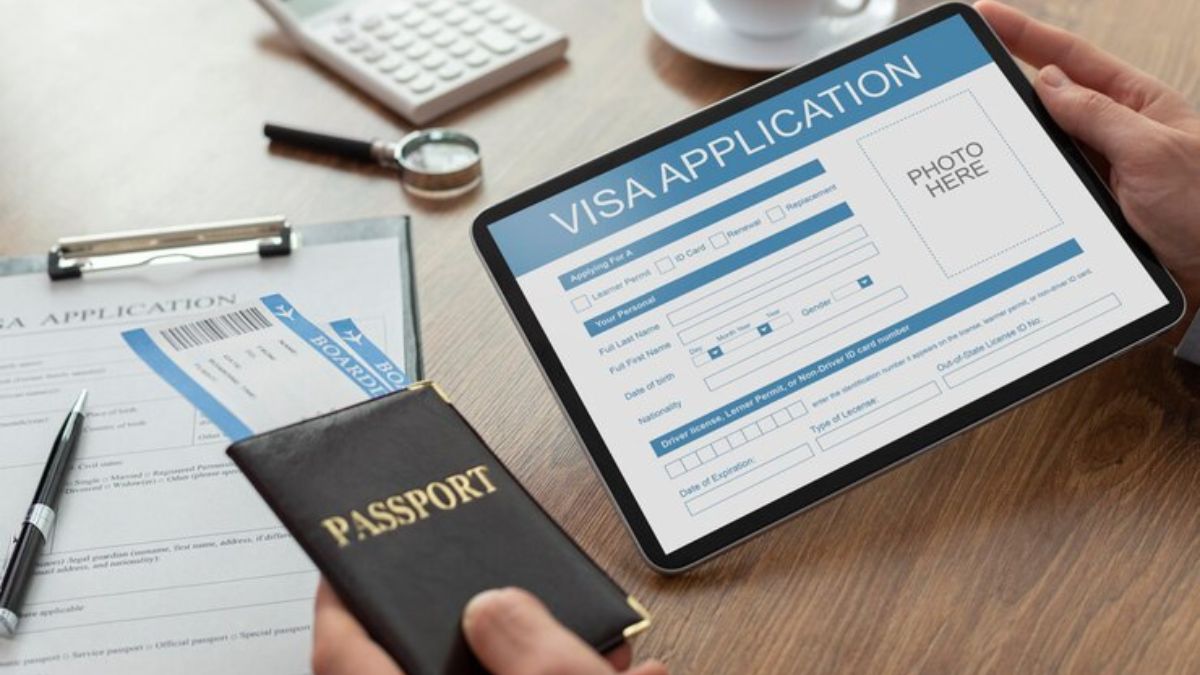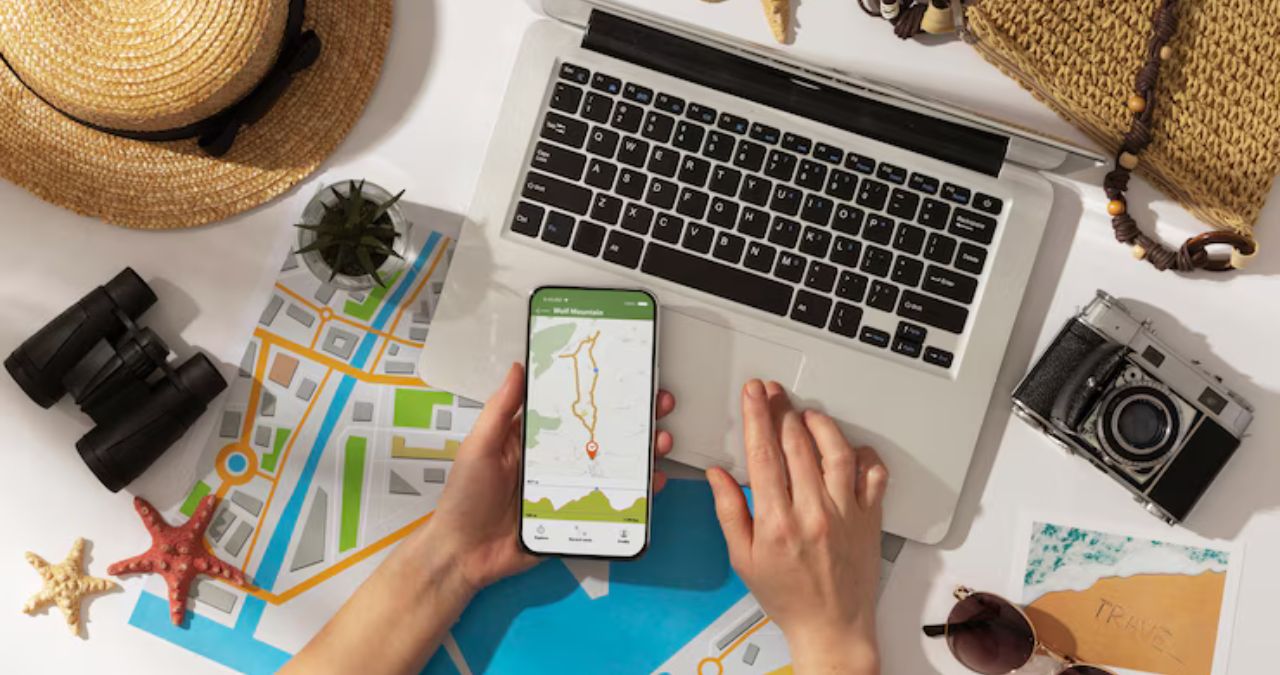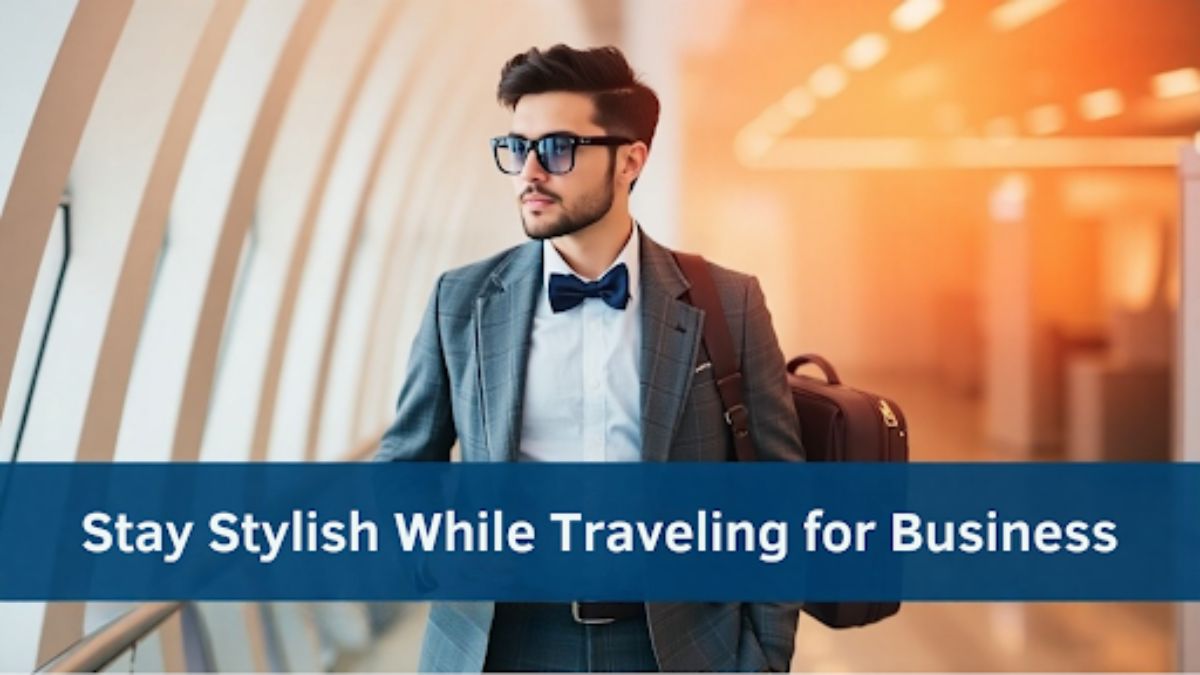TRAVEL
Your Path to Travel: Which Visa Types are Right for You?

Introduction to Travel Visas
Traveling opens doors to new cultures, breathtaking landscapes, and unforgettable experiences. However, before you pack your bags and board a flight, understanding the visa requirements is essential. The United States offers various types of visas that cater to different purposes of travel—whether you’re planning a vacation, seeking employment opportunities, pursuing education, or conducting business.
Navigating the complex world of visas can feel overwhelming at first glance. But don’t worry; getting familiar with the types of visas for the United States will help you determine which one suits your needs best. Let’s dive into this journey together and explore what each visa entails!
Tips for a Successful Visa Application Process
Start by gathering all necessary documents well in advance. This includes your passport, photographs, and any supporting materials related to your travel plans.
Ensure that you understand the specific requirements to obtain a visa for the United States. Each category has unique stipulations, so check carefully before submitting your application.
Double-check every detail on your forms. Small mistakes can lead to delays or even rejections. Attention to detail is crucial in this process.
Don’t hesitate to reach out for help if needed. Consulting with experts or using official resources can clarify doubts and provide guidance.
Be prepared for an interview if required. Dress professionally and practice common questions beforehand; confidence can make a significant difference during this step of the process.
Types of Travel Visas: Tourist, Work, Study, and Business
Travel visas come in various forms, each tailored to different purposes.
A tourist visa is designed for those looking to explore and experience new cultures. It allows you to stay for a limited period while enjoying the sights without engaging in employment.
Work visas cater to individuals seeking employment within the country. These can be complex since they often require sponsorship from an employer, ensuring that applicants are qualified professionals.
For those pursuing education, student visas provide access to schools and universities. They enable international students to immerse themselves in academic life while adhering to specific enrollment criteria.
Business visas facilitate short-term business activities like meetings or conferences. This type of visa ensures that individuals can engage with partners without the intent of permanent residency.
Choosing the right type depends on your travel intentions and future plans.
Requirements for Each Visa Type
When considering the types of visas for the United States, each category has its own set of requirements.
For tourist visas (B-2), applicants must demonstrate their intent to return home after visiting. This often includes proof of financial stability and ties to one’s home country.
Work visas vary significantly based on job type. Generally, you will need a sponsor in the U.
S., along with relevant qualifications and experience related to your field.
Students applying for an F-1 visa must provide acceptance letters from accredited institutions, proof of sufficient funds, and a clear plan regarding their studies.
Business visitors typically require an invitation from a U.
S.-based company detailing the purpose of their visit. Documentation proving business connections is also essential.
Understanding these specific requirements can make or break your application process.
Pros and Cons of Each Visa Type
Tourist visas are straightforward. They allow you to explore the United States for leisure. The downside? They’re often short-term, limiting your stay and preventing work.
Work visas provide job opportunities in various fields. This visa can lead to long-term residency options. However, securing a sponsor can be challenging and restricts your employment flexibility.
Study visas open doors to educational experiences at renowned institutions. Students gain invaluable skills and cultural exposure. On the flip side, they may limit work hours during studies and require proof of financial stability.
Business visas facilitate networking and investment potential in the U.
S. They’re excellent for entrepreneurs looking to expand their reach. Yet, these types come with strict documentation requirements that can be time-consuming.
Each visa has its unique advantages and drawbacks depending on individual goals and circumstances.
How to Apply for a Travel Visa
Applying for a travel visa can seem daunting, but breaking it down makes it manageable. Start by determining the specific type of visa you need. Each category has different requirements and processes.
Gather necessary documents like your passport, photographs, and any supporting paperwork relevant to your visa type. Double-check that everything is up-to-date—expired documents can lead to delays.
Next, fill out the application form accurately. Errors or omissions can complicate things further down the line. Pay close attention to detail; accuracy is crucial.
Once you’ve submitted your application, be prepared for an interview if required. It’s often a key component in securing a visa.
Monitor your application’s status online. Stay informed about processing times and any additional information requests from authorities. Keeping track helps ensure you’re ready when it’s time to move forward with your travel plans.
Common Mistakes to Avoid When Applying
One of the most frequent pitfalls is incorrect documentation. Always double-check that you have all required papers in order, including your passport and financial statements.
Another common error is missing deadlines. Each visa type has specific timelines for applications and interviews. Staying organized will save you a lot of stress.
Some applicants forget to tailor their application to the specific visa category. Generic answers won’t cut it; make sure your responses align with the purpose of your travel.
Also, don’t underestimate the importance of honesty on forms and during interviews. Inconsistencies can lead to immediate denials or future complications.
Neglecting to prepare for potential interviews can be detrimental. Practice common questions related to your travel plans and intentions so you feel confident when speaking with consular officers.
Tips for a Smooth Visa Application Process
Start early. Give yourself plenty of time to gather documents and submit your application. Last-minute rush can lead to errors.
Stay organized. Create a checklist based on the requirements for each type of visa you need. This will help ensure nothing gets overlooked.
Double-check everything before submission. A minor error could delay your process significantly, so review all forms for accuracy.
Be honest in your application. Misrepresentation can result in denial or even a ban from future applications.
Prepare for the interview by practicing common questions related to your travel intentions and background.
Follow up after submission if needed but avoid excessive inquiries that might come across as impatience.
Maintain patience throughout this journey; processing times can vary widely depending on the type of visa and other factors involved.
Conclusion
Traveling can be an exciting adventure, but understanding the landscape of visas is crucial. Whether you’re planning a leisure trip, pursuing education, seeking employment, or starting a business in the United States, knowing the types of visas available and their respective requirements is essential for a successful application.
Each visa type has its own benefits and challenges. Tourist visas allow for exploration without work commitments. Work visas open doors to career opportunities but come with job-specific restrictions. Student visas facilitate academic pursuits while binding you to enrolled institutions. Business visas offer networking prospects but require solid plans.
Navigating through applications can seem daunting at first glance. Gathering all necessary documents and double-checking your forms are critical steps that shouldn’t be overlooked. By preparing ahead of time and avoiding common pitfalls—like submitting incomplete paperwork—you increase your chances of approval dramatically.
Consider these insights as stepping stones on your journey toward traveling to the U.
S. With careful research and preparation tailored to your needs, you’ll find yourself well-equipped to choose the right visa type for any purpose you have in mind!
TRAVEL
Traveler.com: Your Ultimate Guide to Adventure Travel

There’s nothing quite like the thrill of adventure travel. It takes you out of your comfort zone, connects you with unique cultures, and forces you to see the world in new, exciting ways. Whether you’re conquering the jagged peaks of the Dolomites, exploring the depths of Antelope Canyon, or hiking the Trail of 10 Falls in Oregon, adventure travel offers the perfect mix of heart-pumping activity and natural beauty.
This guide is your go-to resource for planning unparalleled adventures, covering everything from top destinations to tips for making the most out of your trips. By the end of this post, you’ll be ready to pack your bags and experience the ultimate adrenaline rush.
Why Choose Adventure Traveler.com
Adventure Traveler.com is more than just ticking off attractions from a list. It’s about pushing boundaries, learning about yourself, and genuinely connecting with the world around you. Here are three reasons to opt for adventure travel:
- Personal Growth: Whether climbing Mount Kilimanjaro or trekking to Trolltunga Cliff, challenging yourself physically and mentally fosters resilience and confidence.
- Cultural Immersion: Adventure travel doesn’t just take you to amazing locations; it gives you opportunities to connect deeply with local communities and traditions.
- Unparalleled Views: Few experiences rival catching the sunrise over Machu Picchu, standing atop Austria’s alpine peaks, or witnessing the cascading waters of Silver Falls in Oregon.
Whether you’re an experienced adventurer or dipping your toes into the unknown, adventure travel is a life-changing choice.
Top Adventure Travel Destinations
The world is full of extraordinary locations waiting to be explored. Here are some of the most captivating spots to add to your adventure bucket list:
1. The Dolomites, Italy
Known for their dramatic, jagged peaks and lush meadows, the Dolomites offer unparalleled hiking, via ferrata climbing, and even winter skiing.
- Adventure Tip: Plan a multi-day trek along the Alta Via trails for jaw-dropping scenery with UNESCO World Heritage recognition.
- Don’t Miss: The mesmerizing Lago di Braies – an emerald lake perfect for photos or relaxing after a challenging hike.
2. Trolltunga Cliff, Norway
Looking for a magical viewpoint? Trolltunga juts 700 meters above Lake Ringedalsvatnet, offering a sweeping panorama of Norway’s untouched wilderness.
- Adventure Tip: Start early and prepare for a 12-hour hike. The payoff is worth every single step.
- Don’t Miss: The fjords surrounding Trolltunga are an explorer’s dream and ideal for kayaking excursions.
3. Antelope Canyon, Arizona
The slot canyons’ smooth, wave-like sandstone walls feel like nature’s finest art gallery, perfect for hiking and photography.
- Adventure Tip: Book a guided tour to access both the Upper and Lower sections of the canyon. Morning tours offer the best light for photos.
- Don’t Miss: Nearby Horseshoe Bend, another must-see natural wonder.
4. Machu Picchu, Peru
For history lovers and adventurers alike, the “Lost City of the Incas” is among South America’s most iconic sites.
- Adventure Tip: Embark on the multi-day Inca Trail to Machu Picchu for an unforgettable fusion of adventure and history.
- Don’t Miss: Take time to explore the lesser-traveled Sacred Valley, filled with ancient ruins and colorful markets.
5. Trail of 10 Falls, Oregon, USA
Oregon’s Silver Falls State Park offers a breathtaking hike where you’ll encounter (as the name suggests) ten awe-inspiring waterfalls.
- Adventure Tip: Bring waterproof footwear; you’ll get up-close to some of the park’s cascading falls, including one trail that takes you behind a waterfall!
- Don’t Miss: Silver Falls Lodge, an excellent place to recharge after your hike.
How to Plan Your Adventure Travel
Being prepared is key to making the most of your adventure. Follow these steps to ensure your trip runs smoothly:
Choose the Right Destination
Selecting a spot depends on your interests, fitness level, and budget. Use tools like Traveler.com to explore destination options tailored to your preferences.
Pack Smart
Adventure travel often involves unpredictable conditions. Essentials include:
- All-weather clothing
- Sturdy hiking boots
- A first-aid kit
- Portable chargers
- Lightweight snacks and water filtration systems
Stay Safe
No adventure is worth risking your safety. Always:
- Research the local terrain and weather.
- Inform someone trustworthy of your travel plans, especially if heading out solo.
- Travel with a guide for unfamiliar terrain, such as Kilimanjaro or specific sections of the Dolomites.
Immerse Yourself
Adventure travel is about more than the activities; it’s an opportunity to savor the culture and environment. Try local food, participate in customs, and prioritize sustainable travel choices to respect the planet and its people.
The Adventure Travel Community at Traveler.com
One of the best parts of adventure travel is the amazing people you meet along the way. Traveler.com fosters a strong sense of community among like-minded globe-trotters. From travelogues featuring epic climbs to tips on hidden hike trails, our thriving community offers endless inspiration.
Looking for a way to connect? Check out Traveler.com’s forums where you can share stories, ask for advice, and even find travel buddies for your next expedition.
TRAVEL
Akhnoor: Discover the Hidden Majesty

Tucked away in the northwestern corner of Jammu and Kashmir lies Akhnoor, a town that many overlook—but shouldn’t. With a history that echoes from ancient Buddhist stupas to Mughal arches and Dogra forts, Akhnoor is a mystical blend of heritage, natural beauty, and spiritual essence. While many tourists rush to Srinagar or Gulmarg, the majesty of Akhnoor remains quietly waiting to be discovered.
This article invites you to slow down, breathe in the fresh Chenab river air, and experience the hidden magic of Akhnoor—one panoramic view, ancient stone, and smiling face at a time.
Where Is Akhnoor?
Akhnoor is located about 28 kilometers from Jammu city, on the banks of the mighty Chenab River. It lies on the western edge of the Jammu district and acts as a gateway to the border regions, while still preserving the soul of the Dogra heartland.
Accessible via NH-144A, Akhnoor is a perfect day-trip destination or a weekend retreat for those seeking something more soulful than commercial.
Akhnoor Through the Ages
Few towns in India can claim a continuously inhabited legacy from prehistoric times. Akhnoor can.
-
Early Buddhist presence through relics and stupas
-
Mughal visits, especially under Emperor Akbar
-
Dogra rule, which fortified and beautified the town
-
Colonial interest during the British Raj
-
And now, a peaceful yet vibrant cultural hub
The Majesty of Akhnoor Fort
Dominating the skyline is the Akhnoor Fort, a 17th-century marvel constructed by Raja Tegh Singh. Overlooking the Chenab, this sandstone fortress is both majestic and melancholic.
Highlights include:
-
Arched gateways
-
Octagonal bastions
-
Ornate windows and watchtowers
-
Stunning sunset views over the river
It’s a dream for photographers, historians, and peace seekers alike.
The Chenab River’s Role in Akhnoor’s Culture
The Chenab isn’t just a river—it’s a living artery that sustains life, inspires poetry, and defines Akhnoor’s rhythm.
Activities around the river include:
-
Riverbank walks
-
Fishing
-
Photography
-
Riverside picnics
-
Cultural festivals
It’s particularly awe-inspiring during the monsoons, when the river roars with majesty.
Spiritual Sites of Akhnoor
For spiritual travelers, Akhnoor offers:
-
Pandav Gufa (Pandava Cave): Believed to have been visited by the Pandavas during exile
-
Jambhu Dev Temple: A serene shrine often filled with chants and calm
-
Radha Krishna Mandir: Known for its intricate carvings and peaceful aura
Akhnoor and the Buddhist Connection
Akhnoor has been identified as Ambaran, a site linked with ancient Buddhist heritage.
-
Excavations reveal 9th-century stupas, monastic cells, and relics
-
Pottery shards and gold artifacts have been found
-
The site is now protected and visited by historians worldwide
It’s one of the oldest Buddhist sites in north India.
The Mughal Touch in Akhnoor
Legend has it that Emperor Akbar camped in Akhnoor during one of his northern expeditions. The architecture of some arches and resting houses (sarais) bears clear Mughal influences—domes, scalloped arches, and latticework—making Akhnoor a historical tapestry.
Dogra Dynasty and Akhnoor’s Evolution
The Dogras of Jammu fortified Akhnoor for defensive and cultural purposes. They:
-
Built the fort and temples
-
Laid trade routes connecting Kashmir
-
Left behind murals, coins, and oral stories
Local Life and Culture in Akhnoor
Akhnoor is home to Dogras, Gujjars, Paharis, and more. Their warm hospitality, earthy wisdom, and love for folklore make visiting a deeply enriching experience.
Handicrafts and Local Markets
From handwoven shawls to copper artifacts, local markets brim with authenticity.
-
Don’t miss:
-
Dogra jewelry
-
Hand-painted clay pots
-
Local wooden toys
-
Woolen caps and handloom fabrics
-
Cuisines You Can’t Miss in Akhnoor
Food is a celebration here.
-
Rajma Chawal with desi ghee
-
Kalari (hill cheese)
-
Lamb rogan josh
-
Kahwa tea
-
Churpa (dried cheese with herbs)
Local eateries serve organic, earthy flavors that define Dogra gastronomy.
Scenic Views and Photography Spots
-
Akhnoor Fort rooftop at sunset
-
River Chenab during dawn
-
Misty mornings from Potha Hill
-
Monsoon clouds over historic arches
Whether you’re a casual snapper or DSLR pro, Akhnoor is frame-worthy.
Adventure Opportunities in and Around Akhnoor
-
Trekking trails along the river valley
-
Cycling routes toward border villages
-
Birdwatching near marshlands
-
Rural farm visits and eco-stays
Wildlife and Natural Beauty
Akhnoor is surrounded by dense green fields and river-fed ecology. Expect:
-
Peacocks
-
Parakeets
-
River otters
-
Wildflowers
-
Seasonal butterflies
Festivals Celebrated in Akhnoor
-
Baisakhi Mela – Dance, food, color
-
Navratri – Temple processions
-
Lohri – Bonfires and folk music
-
Local sports days and village fairs
Akhnoor in Literature and Folklore
Akhnoor finds mention in Dogri poems, ancient epics, and Sufi tales. Folk songs tell of warriors, rivers, and divine love stories that echo through generations.
Why Akhnoor Is Still Off the Tourist Radar
-
Lack of aggressive marketing
-
Overshadowed by Kashmir Valley
-
Minimal luxury accommodations
But this obscurity is its charm—it’s untouched, soulful, and authentic.
How to Reach Akhnoor
-
By Road: 40 minutes from Jammu
-
By Air: Fly into Jammu Airport
-
By Rail: Nearest station is Jammu Tawi
-
By Bus: Direct local buses from Jammu
Where to Stay in Akhnoor
-
Government guesthouses
-
Boutique homestays
-
Nearby Jammu hotels for day-trippers
Best Time to Visit Akhnoor
-
Spring (March–May) – Blossoms and cool breeze
-
Autumn (Sept–Nov) – Clear skies, photography
-
Monsoon (July–Aug) – River magic
-
Avoid harsh winters unless you’re well-prepared
Day Trip Itinerary from Jammu to Akhnoor
-
8 AM: Leave Jammu
-
9 AM: Explore Akhnoor Fort
-
11 AM: Visit Buddhist site
-
1 PM: Local lunch
-
2 PM: River walk
-
4 PM: Local market
-
6 PM: Sunset from fort
Weekend Retreat in Akhnoor
Day 1: Heritage + market + food
Day 2: River walk + temple visits + relax
Akhnoor for Spiritual Travelers
-
Quiet temples
-
Morning aarti by the river
-
Yoga-friendly open spaces
-
Cave meditations
Responsible Tourism in Akhnoor
-
Avoid plastic
-
Support local artisans
-
Respect cultural sites
-
Use eco-friendly transport options
Akhnoor and Indo-Pak History
Close to the Line of Control, Akhnoor has seen war, diplomacy, and peacebuilding. The people here embody resilience and hope.
Role of Akhnoor in Archaeological Research
Excavations continue to unearth:
-
Tools
-
Coins
-
Temple relics
-
Buddhist manuscripts
It’s a living museum waiting to be fully uncovered.
Future Tourism Potential of Akhnoor
With better roads, promotions, and heritage conservation, Akhnoor could become a heritage and spiritual tourism hub.
Conclusion
Akhnoor isn’t just a stop on the map—it’s a journey into forgotten majesty, heartfelt culture, and timeless beauty. If you’ve been seeking a destination off the beaten path that touches your soul and ignites your curiosity, Akhnoor welcomes you with open arms and centuries of stories.
TRAVEL
How to Stay Stylish While Traveling for Business

Business travel often requires balancing productivity with comfort, and maintaining your sense of style can make a big difference in how you feel and present yourself during your trip. Whether you’re heading to a client meeting or attending a conference, dressing well can boost your confidence and leave a lasting impression. But how do you stay stylish while also staying practical on the go?
Choose Versatile Pieces
When traveling for business, it’s essential to pack items that can be dressed up or down. Think of business casual outfits that can transition easily from day to night. For example, a tailored blazer can be worn during meetings and casually thrown over a T-shirt for a relaxed dinner afterward. Versatile fabrics like merino wool or wrinkle-resistant materials are great choices for business travelers who need to stay sharp without worrying about getting too wrinkled during the journey.
Pack Smart Accessories
Accessories can make or break an outfit. Opt for classic accessories that elevate your look, such as a leather belt, watch, or a sleek briefcase. A stylish scarf can add a touch of sophistication without taking up much space in your bag. Additionally, quality shoes are a must. Go for ones that are both comfortable for walking and smart enough for meetings. A good pair of dress shoes or loafers can carry you through the day, ensuring you feel both confident and comfortable.
What Happens When Your Valuable Items Need Special Care?
What if you could take your most prized possession with you on your business trip, without the stress of worrying about its safety or condition? Imagine traveling for business, and instead of leaving behind valuable items, you have the peace of mind knowing they’re being well taken care of. Whether it’s a rare item or a luxury asset, sometimes, your transportation needs go beyond the usual.
If you’re traveling with something as valuable as a vintage car, you might wonder how to ensure it gets from point A to point B safely. The solution is simple: explore premium car shipping services that can ship your vintage car to your destination. This way, you won’t have to worry about its condition while you focus on your meetings and business engagements.
The Secret to Perfect Footwear for Business Travel
Ever wondered how some men manage to look effortlessly stylish while traveling for business? It’s all in the footwear. The right pair of shoes can elevate your entire look and give you the confidence to tackle any business meeting or travel challenge that comes your way. But how do you find that perfect balance between comfort and style? Here’s the trick: business casual men’s shoes. Let’s explore why these shoes are the secret weapon you need to stay stylish on the go.
- Loafers: A timeless classic that combines comfort with sophistication, perfect for long travel days and business meetings.
- Oxford Shoes: A versatile choice that can be dressed up or down, ideal for any business casual setting.
- Stylish Sneakers: If the occasion allows, go for a clean, minimalistic sneaker that pairs well with a more relaxed business casual look.
- Comfortable Insoles: For extra support, choose shoes with cushioned insoles or orthopedic designs that ensure comfort even after hours of walking.
Maximize Your Luggage
Invest in high-quality luggage that allows you to stay organized while traveling. A well-organized carry-on bag can help you keep your clothes neat and free from wrinkles, ensuring that you always look sharp. Packing cubes or garment bags can help preserve your clothing and prevent it from getting disorganized during your flight. Keep your accessories, toiletries, and electronics in separate compartments to reduce stress and make packing simpler.
Dress for the Occasion
Understanding the dress code of your destination is key to staying stylish while traveling for business. Research the local business culture and dress accordingly. Some places may require more formal attire, while others may lean toward a more relaxed business casual approach. By adjusting your wardrobe to fit the local expectations, you’ll always feel confident and in place.
Stay Fresh and Ready to Impress
After a long flight, you might feel a bit tired or disheveled. Always have a quick refresh kit with you that includes a deodorant, face wipes, and a small bottle of cologne to quickly freshen up before a meeting. A few spritzes of cologne can provide an instant confidence boost. Additionally, a quick change into something comfortable after a long flight can help you reset, allowing you to arrive at your destination feeling energized and stylish.
Conclusion
Business travel doesn’t have to mean sacrificing style. By choosing the right clothing, accessories, and luggage, you can ensure that you look sharp while staying comfortable. Don’t forget the importance of versatility and practicality when packing for your next business trip. Looking your best not only boosts your confidence but can also set the tone for successful meetings and engagements. In fact, staying well-prepared and organized—just like streamlining business operations—can make your trip smoother and more efficient. Whether you’re traveling for a quick business trip or a longer conference, these tips will help you stay stylish and prepared for anything.
-

 HEALTH2 years ago
HEALTH2 years agoIntegrating Semaglutide into Your Weight Loss Plan: A Practical Guide
-

 HOME IMPROVEMENT2 years ago
HOME IMPROVEMENT2 years agoHow to Choose the Perfect Neutral Area Rug for Every Room
-

 LAW1 year ago
LAW1 year agoTeenage Drivers and Car Accidents in California: Risks and Parental Liability
-

 CONSTRUCTION1 year ago
CONSTRUCTION1 year agoConstruction Site Safety Regulations in New York and Your Rights as a Worker
-

 LAW1 year ago
LAW1 year agoPost-Divorce Considerations in California: Modifications and Long-Term Planning
-

 HOME2 years ago
HOME2 years agoSandra Orlow: The Teen Model Who Captivated the Internet
-

 FINANCE1 year ago
FINANCE1 year agoDigital Asset Management in Florida Estate Planning
-

 FASHION2 years ago
FASHION2 years ago7 Celebrity-Inspired Elegant Summer Dresses For 2024
